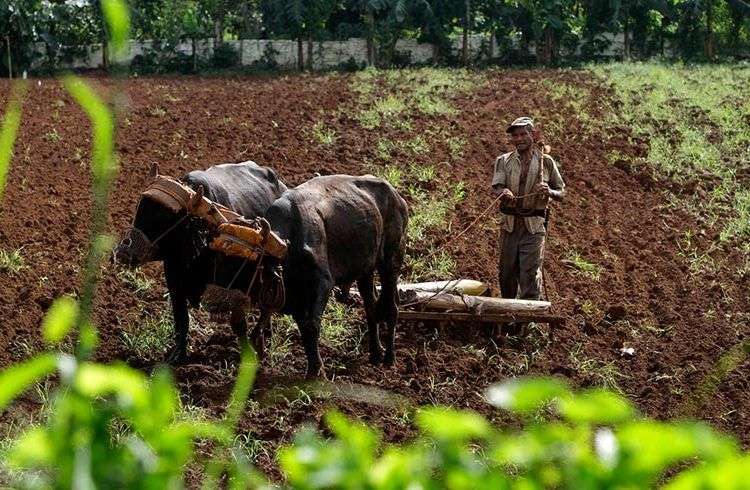The elimination of the National Union of Collection and the reduction of 41 percent of the staff of the Ministry of Agriculture -6441 positions less and more than 15 million annual savings in salaries-are perhaps two of the most important measures adopted in Cuban agricultural sector after the government allowed in late 2008 the granting in usufruct of idle land in the country.
The information was given on Friday by the minister, Gustavo Rodríguez Rollero, who gave an account of his work to the deputies of the National People’s Assembly, which met last week.
And although the new provisions will not per se promote growth in food production in the country, the package of regulations and relaxations of the last 6 years also failed, both can be noted, finally, the necessary separation of business functions of the government concerning the Ministry of Agriculture, as well as a possible reduction of bureaucratic obstacles that undermine the production and marketing of agricultural products.
Among the measures announced by the Minister including 17-efective immediately-are designed to remove obstacles in the development of the Basic Units of Cooperative Production (UBPCs), another 23 to “equal conditions” for productive ways and integration to the Domestic Trade system of the 378 markets and 1 538 small markets managed by the Collection enterprise.
Rollero Rodriguez also reported that companies operating in the Cuban agricultural system will be integrated into two groups: one, livestock (with 80 companies and 4 research institutes); and other agricultural (with 50 companies and 5 institutes) as reported the Trabajadores weekly in its website.
Likewise, the Cuban minister gave accounts of the extinction of 298 UBPCs and 105 Agricultural Production Cooperatives (CPA), “they had no chance of recovery,” and the creation of 5 new UBPCs.
The improvement of the system of Cuban agriculture, the minister said, includes 3 phases until December 2016, which include changes in the budgeted and state system, the creation of provincial enterprises and will end with the extinction of the municipal and provincial branches of the Ministry to create directions for the Councils of the Administration at municipal and provincial level in agriculture.
All this, he said, is the result of experience gained in the provinces of Artemisa and Mayabeque, where they are experimenting with new forms of state management.
Such structural movement could motivate new practices in the production and marketing of food if this sector captures sufficient investment volumes -capitalization- through the Foreign Investment Law and the priority that the government has allocated to agriculture regarding possible investors.
Of the 6.3 million hectares of arable land that Cuba has more than 1 million remain idle according to data from 2013. Since 2008, according to government data, the land given in usufruct amounts to more than 1.5 million hectares.
Other data presented at meetings of the Cuban Parliament placed more than 900 thousand people linked to agriculture, which represents 13.2 percent of the working force of the island
However, this sector only represents a starving 4 percent of GDP, while the country must import each year more than 2 billion dollars in food.










